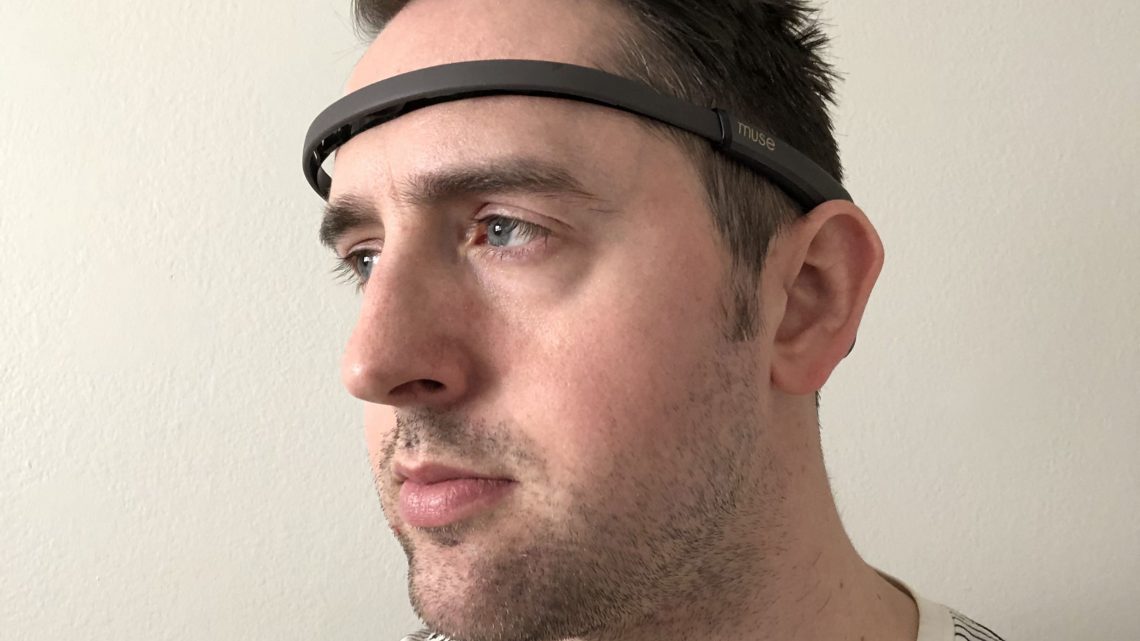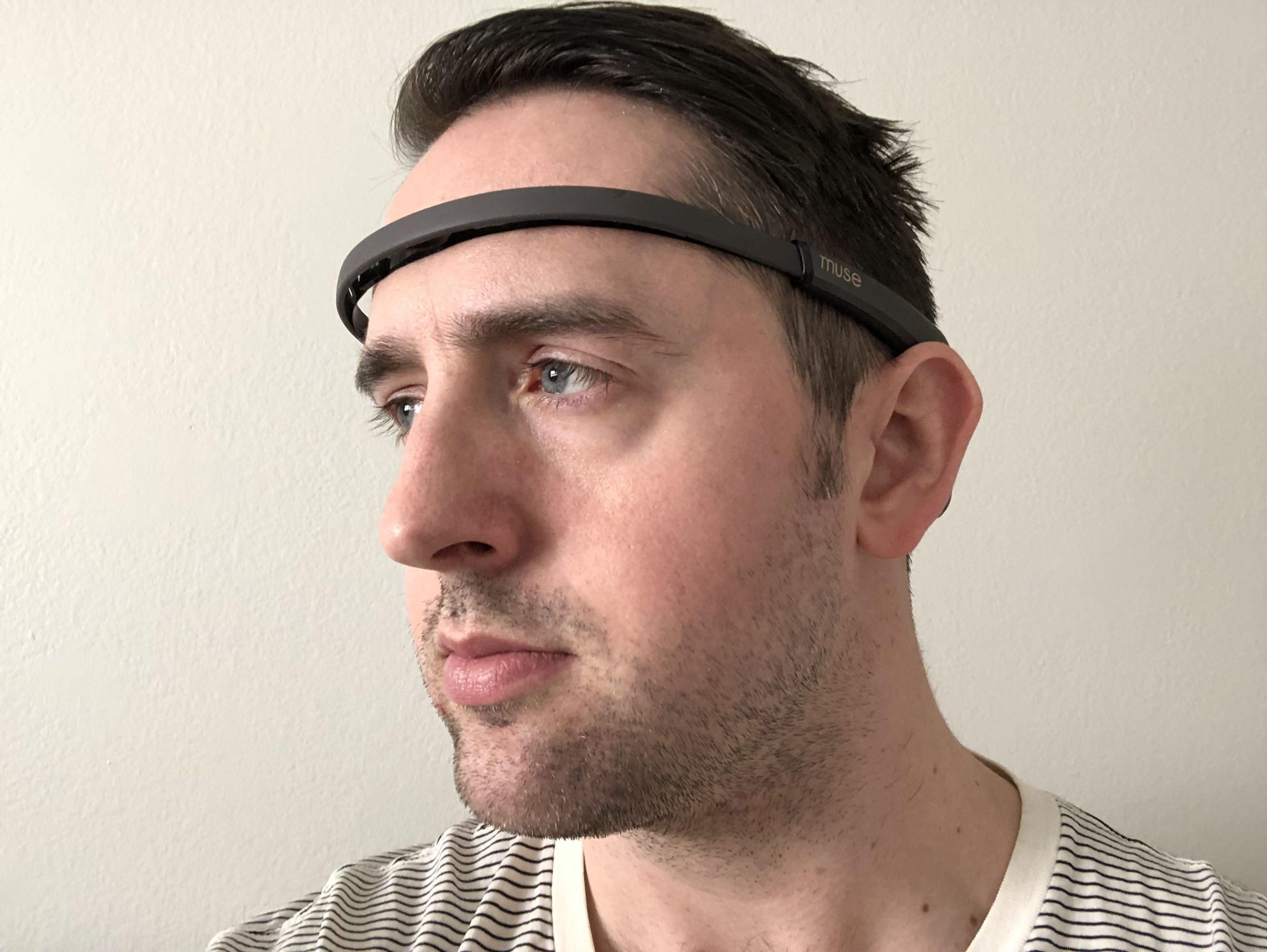
My Journey Through the World of Rich-People Meditation Products
April 23, 2019Meditation is undeniably one of self-care’s all-time greats. Few other millennia-old practices have stood the test of both time and scientific scrutiny. Additionally, it’s a simple process, you can do it pretty much anywhere at any time, it doesn’t require any equipment, and, best of all, it costs you nothing.
But that hasn't stopped people trying to make a buck off it.
As the meditation/mindfulness movement has picked up steam these past few years, we’ve seen a variety of products and services pop up to aid those looking to de-stress, relax, or otherwise find inner peace. These run the spectrum from GOOP-y opulence to sci-fi wearables. The best of these, like the app Headspace, marry ancient methods with modern technology at an affordable price. Others, like this $3,500 meditation stool, feel, to me, more focused on helping customers find their credit card than enlightenment.
Living in LA, I frequently come across these seemingly unnecessary meditation accessories with ludicrous price tags. My gut reaction has always been a mix of disdain and respect for the grift. But I recently wondered if I’m perhaps being too cynical. What if you actually can spend or compute your way to a higher plane of thinking? To find out for myself, I embarked on a mission to try out the most high-end and high-tech meditation products I could find.

Cloak
I'd always assumed it was fine to meditate in street or gym clothes, but as my research soon revealed, you apparently need something special to wear when you’re opening up that third eye. A company called DharmaCrafts has an entire webpage of “meditation clothing” available for purchase. I got them to send me a red fleece meditation cloak that retails for $179 to wear while I did my mental work. I picked the red color option because I thought I would make me look like a cool druid, but when it arrived and I tried it on, the vibes were closer to a Snuggie from The Handmaid’s Tale.
For those who don’t know, Los Angeles is warm year-round, so when I sat down in my fleecey vestments and got to meditating, it didn't take long for me to start sweating to a distracting degree. I decided I‘d have to go cloakless for the rest of my tests, but I’m keeping the cloak on hand in case I ever I need to seek wisdom from someone while sitting on a mountaintop.
Breath Monitor
Spire Stone, a Fitbit-like device that retails for $129.99, clips onto your waistband and tracks your breathing as you go about your day, vibrating and sending a phone alert when it thinks you’re too stressed and need to stop for some deep breaths. Because when has telling someone to calm down ever produced anything but the desired results? I wore one for about a week.
It did a pretty good job of getting me to do way more impromptu meditation sessions than I normally would have. And, on more than one occasion, its sedentary sensors shamed me out of bed when I’d languished too long after my alarm went off. It did, however, have a hard time making sense of when I’d purposefully put myself in tense situations. No, Spire Stone, I’m not hyperventilating. I’m trying to beat this Sekiro boss for the 50th time.

Brainwave-Reading Headband
For a less discreet meditation wearable experience, I tried out a $249 headband by Muse that uses Electroencephalography (EEG) sensors to monitor brain activity.
During the multiple 3-10 minute app-based courses I tried over the course of a week, my headband monitored my brainwaves, breathing, posture, and heartbeat, pumping corresponding ambient sounds into my ears via earbuds as my focus dialed in or wavered. And when I was really in the zone, I’d hear the sound of birds chirping.
On the one hand, I felt as if this audio feedback really did help me free my mind and reach my most meditative state yet. On the other, by tracking all those metrics, it had gamified the experience and made it so I was just trying to rack up those bird chirps for a new personal best every time I sat down for a session.
Nasal Spray
Determined to enlist as many of my senses as possible into my quest for mindfulness, I was immediately intrigued by the nasal spray I found on homeopathic medicine site Remedylink that promised to activate my thymus and pineal glands. According to the copy next to the product, the pineal is a “kind of antenna to the spiritual realms,” but “vaccines and fluoridation damage these vital glands and are in a sense a ‘spiritual castration.’” As a lover of both vaccines and tap water, things weren’t sounding great for my glands. Fortunately, the $89 tincture of liquid I was eyeballing claimed to be a “subtle aid to accessing the spiritual realm,” so maybe my glands could hold on to their testicles for a bit longer.
After explaining my project to the site’s owner, Spencer Feldman, he agreed to send me a Satori sample as long as I promised to use it in nature and temper my expectations. A man of my word, I took the bottle he sent to a park and gave both nostrils a spritz before sitting down on the grass for a meditation session. Now, I’m no stranger to putting stuff up my nose for work, but I was not ready for the sting that followed. A quick check of the ingredient list on the bottle informed me it was likely caused by the salt in the mixture. Once the pain subsided to a point where I wouldn’t be distracted by it, I sat in the grass for a 10-minute meditation sesh. I can’t say that it felt any different from the rest of them, but I was happy that Spencer’s caveat had afforded me a change of scenery.
Brain Massage Class
Meditation need not be a solitary endeavor, so I decided to cap off my journey by joining a guided class at Unplug, one of LA’s many luxe meditation studios where individual classes are $24 and private sessions can run into the hundreds. Though there were many tantalizing class titles like “Amplified Chill” and “Full Moon Dancing Hands Group Healing,” I ultimately chose one called “Brain Massage” as it incorporated wireless headphones that would blast me with binaural beats throughout the session.

When I arrived and sat down on my cushion with the 30-odd other attendees, I was relieved to hear the instructor, Peter Oppermann, citing research and talking about brain lobes as he explained how the next 45 minutes would go. I laid back and let his soothing German voice ASMR me into a tranquil state. The time flew by. It was probably the most serene meditation experience I’d had, even with someone’s phone alert going off in the middle of it.
I spoke with Oppermann a few days after class to get his expert take on the meditation’s high-tech present and future. He helped me reckon with the initial weirdness I’d felt about involving tech with meditation by likening it to a trojan horse that is introducing the practice to a new generation of people who might not have found it without assistance from some added bells and whistles.
“The Buddha spoke of using ‘skillful means’ I see technology as a skillful mean,” said Oppermann. “It's whatever the practitioner needs to improve the audience’s experience and get them curious about trying something new.”
When I asked him about the ethics of charging high prices for an ultimately free product, Oppermann gave a refreshingly honest answer and validated the concerns I’d been harboring throughout my entire quest.
“There’s absolutely real danger in turning meditation into a commodity,” he said. “If you can breathe you can meditate. To turn this inherent process into something where people think that by buying a gadget, it will get them somewhere… Just use your own judgement. We all have our own inner guidance. Just ask that voice, do I really need this, or do I just need to take a deep breath and close my eyes?”
Follow Justin Caffier on Twitter.

